Introduction of Gantry Girder | Load on Gantry Girder | Types of Load on Gantry Girder

Table of Contents
Introduction of Gantry Girder
The gantry girders are girders which supports the loads that are transmitted through the travelling wheels of the crane.
The crane girder spans from column to column, this usually do not have any lateral support at the intermediate points excepting when a walkway is formed at the top of the girder.
Overhead traveling cranes are used in industrial buildings to lift and transport heavy jobs, machines, and so on, from one place to another.
The crane may be a manually (hand) operated overhead traveling crane (M.O.T.) or an electrically operated overhead traveling crane (E.O.T.).
A typical arrangement of a crane system is shown below. Usually, the crane consists of a bridge made up of two truss girders.
The bridge is termed a crane bridge, crane girder, or crab girder. It spans the bay of the shop and moves in a longitudinal direction.
To facilitate movement, wheels are attached to the ends of crane girders. These wheels move over rails placed centrally over the girders which are called gantry or crane gantry girders.
These girders are designed as laterally unsupported beams until the compression flange is laterally supported by either a catwalk or by an additional member. Show below fig. the front view and top view of the typical arrangement of a crane girder, gantry girder, and column in a workshop.
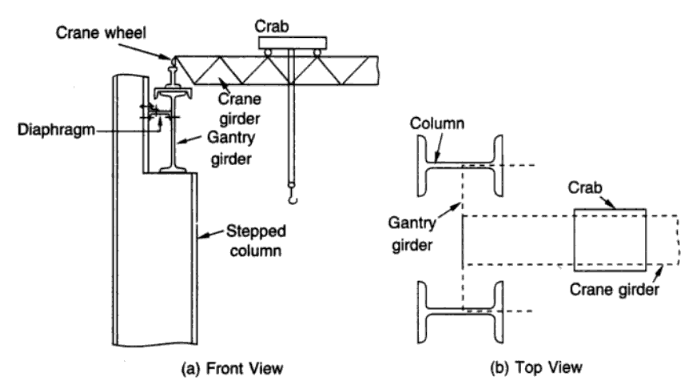
Fig. 2 Typical Arrangement of Gantry Girder and Crane Girder
A trolley (crab) with wheels and a suspended hook is placed over the crane bridge and this arrangement can move in the transverse direction.
However, it should be noted that the two movements of the crane, the longitudinal and the transverse cannot be had simultaneously. Bolted clamps or hook bolts are, used to keep the rails in position.
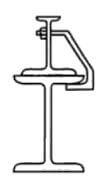
Fig 3. Gantry Girder Concocted With Bolted Clamp

Fig 4. Gantry Girder Concocted With Hook bolt
The gantry girders, because of the necessary clearances, must be placed a distance away from the face of columns. A direct connection with the column, therefore, is impossible.
Because of lateral loads, however, some types of connection is mandatory. This is provided by diaphragm as shown in Fig.2 (a).
In gantry girders, even when deflection is held within limits, there is some rotation at the ends under moving crane.
Accordingly, some provision for longitudinal movement of the top flange at the ends must be made. This is usually taken care of by using bolts with slotted holes (Fig. 2(a), Fig 5.).

Fig 5. Gantry Girder I Section
Some of the types of sections used for gantry girders are shown in Fig. 3,4,5,6 . An I-Section is provided for a manually operated overhead crane (Fig. 3).
The top flange of the I-section is reinforced with a channel with its flanges turned down on the compression flange (Fig. 4) or a channel and a bracket plate are attached to the web of the I-section (Fig. 5) to increase the lateral resistance against the horizontal surge from electrically operated overhead traveling cranes as well as torsional rigidity.
If required, still heavier sections as shown in Fig. 6, may be provided.
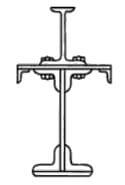
Fig 5. Gantry Girder Havioe Section
Also Read: Commercial Building Roof Types | What is Commercial Building Roof
Load on Gantry Girder
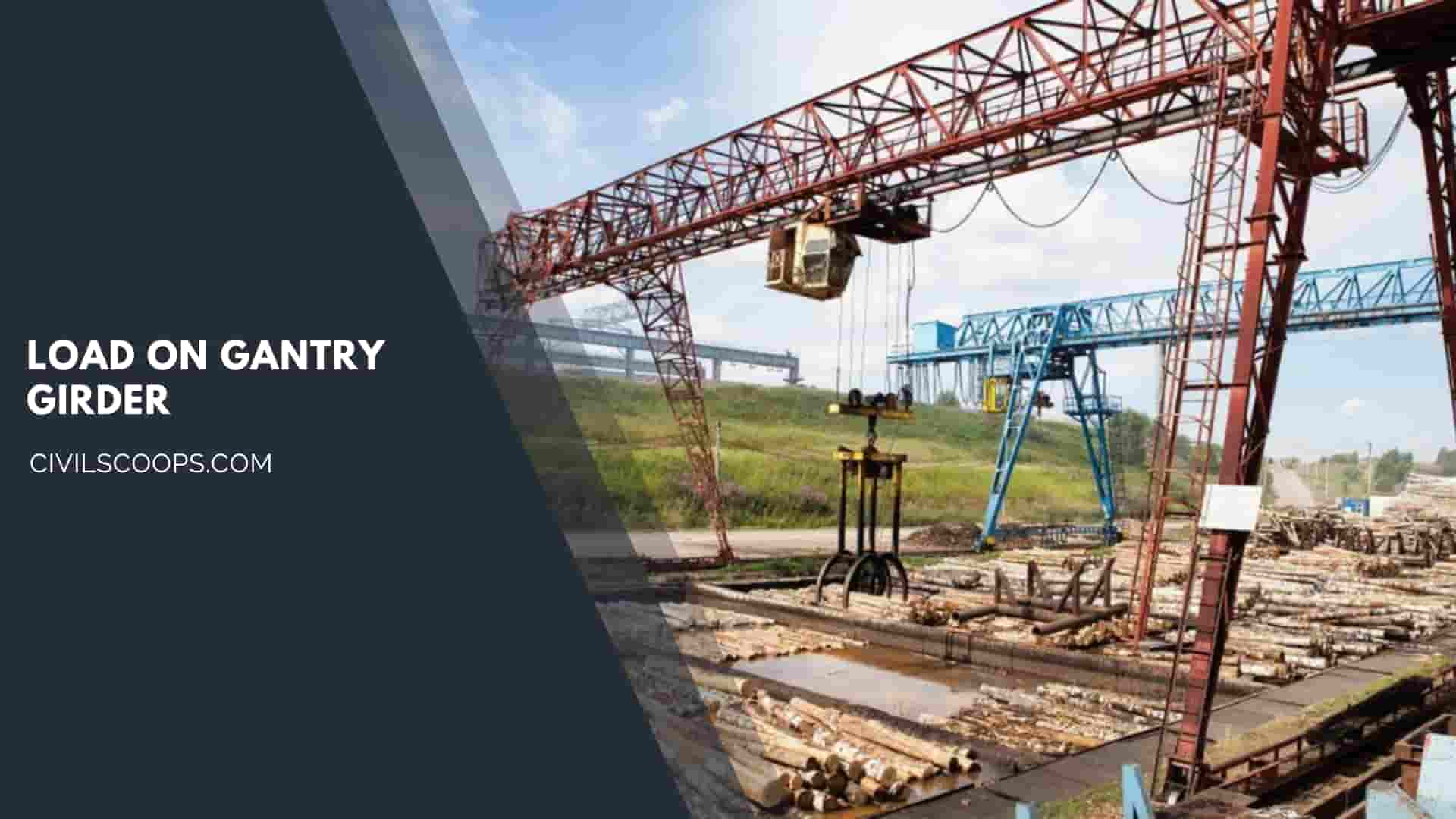
Gantry girders are unique in themselves. First, it is different from the usual beams in buildings. It is laterally unsupported except at the columns.
Second, it is one of the very few girders in the buildings that are subjected to impact. Third, it must be analyzed for unsymmetrical bending because of lateral thrust from the starting and stopping of crab.
Fourth, it is subjected to longitudinal load due to starting and stopping of the crane bridge itself; and the fifth, these are always simply supported. These are subjected to the forces as follows.
- The reaction from the crane girder, acting vertically downwards (Ref. Fig. 6).
- The longitudinal thrust, due to the starting or stopping of a crane, acting in the longitudinal direction.
- The lateral thrust, due to starting/stopping of the crab acting horizontally, normal to the gantry girder.
Useful Article for You
- What Is a Highway Flyover
- What Is Grouting
- What Is a Pile Cap
- What Is a Bond Beam in Masonry
- What Is Sapwood
- What Is Crane
- What Is a Gable
- What Is Superelevation
- What Is Kerb
- What Is the Purpose of Washers
- What Is the Size of a Brick in Inches
- What Is Reinforced Masonry
- What Is Workability
- What Is Bond Breaker
- What Is Plasticizer in Concrete
- What Is Luminous Flux Vs Lumens
- What Is Caisson
- What Is an Undercoat
- What Is a Benchmark Surveying
- What Is Bracing in Construction
- What Is a Beam in Construction
- What Is the Standard Door Frame Size
- What Is a Spandrel Beam
- What Is a Fire Escape
- What Is a Weep Hole
- What Is Tie Beam
- What Is Fine Aggregate
- What Is Pony Wall
- What Is Flag Stone
- What Is Development Length
- What Is Cement Plaster
- What Is a Pitched Roof
- What Is Rafters
- What Is a Slab in Construction
- What Is a Monolithic Slab
- What Is Linear Distance
- What Is Shovel
- What Is Lintel in Construction
- What Is a Concept Sketch
- What Is Mezzanine Floor
- What Is Man Sand
- What Is Plaster Made Out of
- What Is a Floating Slab
- What Is Falsework
- What Is Bituminous
- What Is a Spillway
- What Is Curb and Gutter
- What Is Dampness
- What Is Lap Length
- What Is the Full Form of Fsi
- What Is Door Frame
- What Is Plinth Protection
- What Is Traffic Rotary
- What Is Grade Slab
- What Is Inverted Beam
- What Is Rolling Margin of Steel
- What Is Modulus of Rupture
- What Is Fresh Concrete
- What Is Dpc in Construction
Types of Load on Gantry Girder:
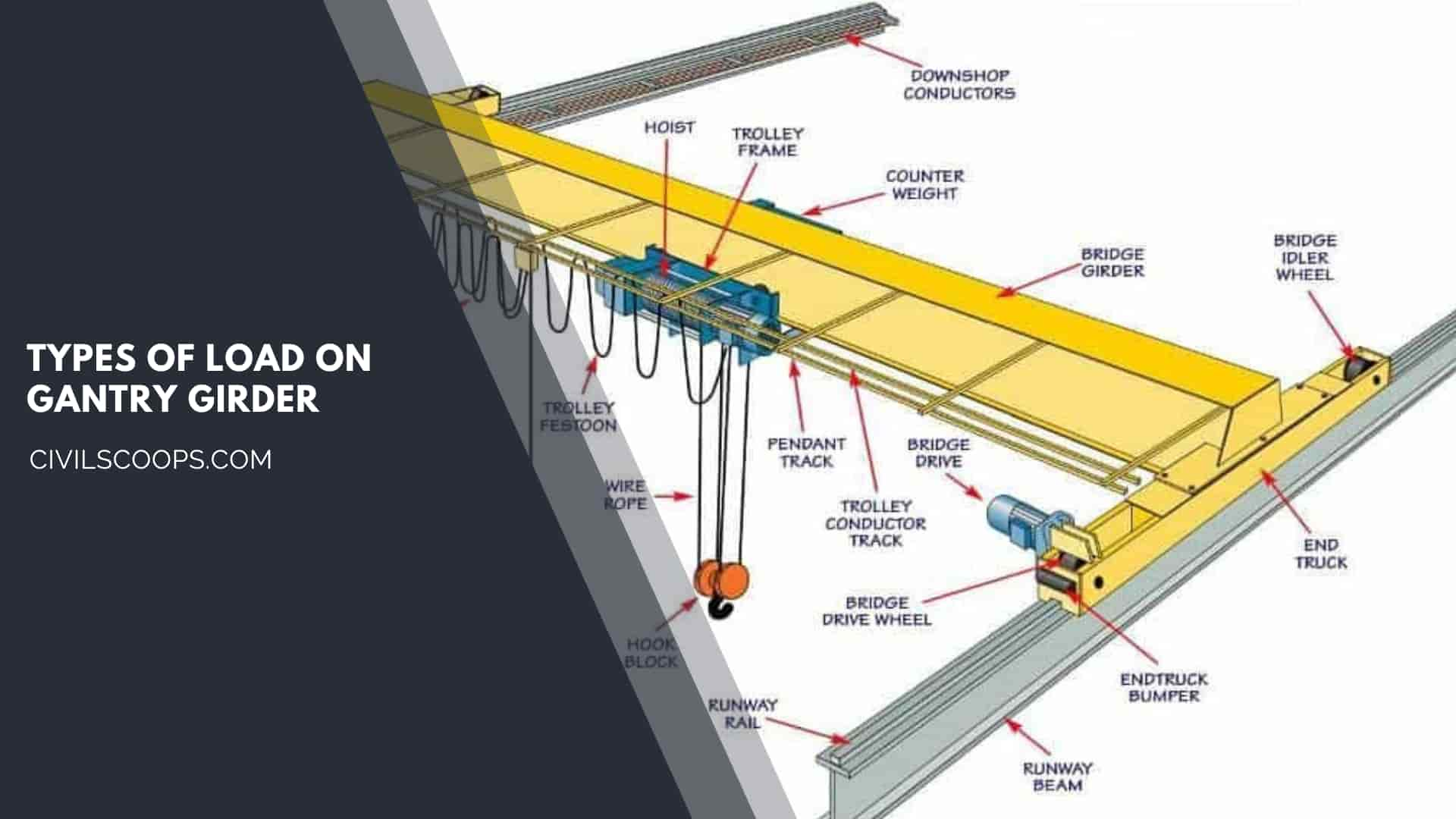
- Vertical Loads on Gantry Girder.
- Lateral Loads on Gantry Girder.
- Longitudinal Loads on Gantry Girder.
- Impact Loads on Gantry Girder.
1. Vertical Loads on Gantry Girder
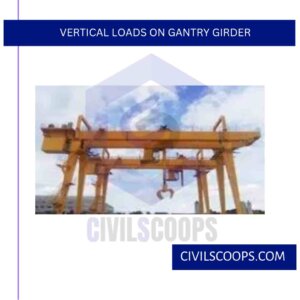
A vertical load acting over the gantry girder is the reaction from the crane girder and consists of the self-weight of the crane, self-weight of the crab, and the crane capacity (the maximum load that can be hoisted).
To calculate the reaction the maximum wheel load is computed. It occurs when the crab is nearest to the gantry girder. In addition to the reaction from a crane girder, the self-weight of the rail should also be considered.
Also Read: What Is Superstructures | Difference Between Load-Bearing and Framed Structures
2. Lateral Loads on Gantry Girder
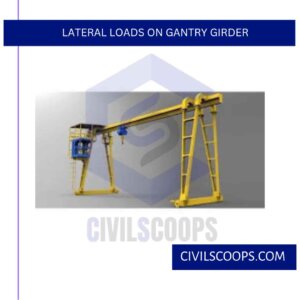
Lateral forces on crane girders may be induced by the,
2.1. Thrust due to the sudden stopping of the crab and load when traversing the crab girders.
- As with the longitudinal gantry girders, the frictional resistance of the rail is transferred into the crab girders and from them into the crosshead girders, thence, as point loads through the main wheels, into the top or compression flanges of the gantry girders.
- The positions of the main wheels when maximum lateral bending and shear take place on the gantry girder will be the same as those when maximum vertical bending moment and shear occurs.
2.2. Crab dragging weights across the shop floor.
- The crane is often requisitioned to drag weights across the shop floor. If the load is extremely massive, it is usually mounted on roughly fashioned rollers, probably running on a timber plank track.
- The lateral thrust and pull on the compressive flanges of the gantry girders then become a matter of conjecture.
- The resisting forces are, firstly, the friction of the main wheel treads upon the gantry rails and, secondly, the forces offered by the flanges of the main wheels bearing against the gantry rails.
- The lateral thrust is assumed to act in the plane of the center of gravity of the upper flange. Acting as it does at the rail level, it has really a lever arm producing torque.
- This small lever arm and, therefore, the torque are neglected. No help is assumed to be afforded by the lower or tensile flange in resisting lateral thrust.
- However, should this help be considered, then the torque due to the thrust multiplied by the distance from the line of action of the thrust to the N.A. (n in this case)—should also be taken into consideration.
Useful Article for You
- How Wide Is a Cinder Block
- How Much Is a Coffered Ceiling
- How to Make Mortar
- How Long Does Hempcrete Last
- How to Use a Hand Sight Level
- How to Construction
- How to Build a Lean to Roof
- How Are Tunnels Built
- How to Layout a Building
- How Wide Is a Car Parking Space
- How Do Shear Walls Work
- How to Measure Concrete Slump
- How Are Bridge Foundations Built
- How to Use Washers with Screws
- How Dense Is Sand
- How High Is a Window from the Floor
- How to Fix Spalling Concrete Foundation
- How Does a Beam Bridge Work
- How Do They Pour Concrete Under Water
- How Does a Sewer System Work
- How High Are Countertops
- How to Seal Brick Wall Interior
- How to Resurface Cement
- How to Use Portland Cement
- How Is Plaster Made
- How to Find Fineness Modulus
- How to Get Rid of Spray Paint Smell on Metal
- How Many Types of Slope Are There
- How Big Is a Stair Landing
- How Does Rebar Help Concrete
- How to Identify a Load Bearing Wall
- How to Get Paint Off Concrete Without Chemicals
- How to Fix Water Damaged Drywall
- How Much to Get Septic Pumped
- How to Cut a Nail or Screw
- How Long Does Wet Concrete Take to Dry
- How Is Varnish Made
- How Does Ejector Pump Work
- How Does a Cantilever Bridge Work
- How Does Hydrometer Work
- How to Get Wet Blood Out of Carpet
- How to Build House on Slope
- How Thick Is Plaster Wall
- How Suspension Bridges Work
- How to Seal a Concrete Roof
- How Was Cement Invented
- How to Calculate Area of Steel
- How to Check Silt Content in Sand
- How a Building Is Constructed
- How Are Roads Classified in India
- How Many Types of Cement in India
- How to Find Contour Interval
- How to Stop Leakage from Ceiling
- How Hardness of Brick Is Tested
- How Many Types of Paint Brushes Are There
- How to Calculate Skirting Area
- How Many Types of Beam
- How to Make Road
3. Longitudinal Loads on Gantry Girder
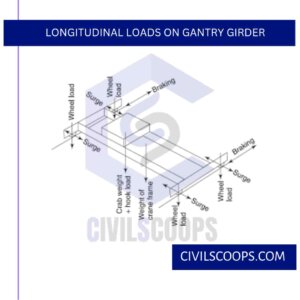
Longitudinal loads are caused due to the stopping or starting of the crane girders and produce a thrust along the rails.
The largest of these, especially in quick-acting electric overhead traveling cranes, is due to the sudden application of the brakes.
The frictional resistance to the sliding of the locked wheels upon the rails is supplied by the crane girder. This element in turn distributes it amongst all the crane column shafts.
The lateral and longitudinal thrusts are transferred at the rail level. Therefore, gantry girders are also subjected to bending moments due to these loads.
4. Impact Loads on Gantry Girder

The stresses produced in gantry girders due to the above loads are more than those caused by gradually applied loads.
This is due to the forces set up by the sudden application of brakes to the rapidly moving loaded cranes acceleration, retardation, vibration, possible slip of slings, etc.
The steelwork which carries these quick-acting cranes must be heavier than the steelwork which supports slow-moving cranes.
With quick-acting electric overhead traveling (E.O.T) cranes, the stresses in the gantry girders are produced almost instantaneously, whereas with slow-moving hand-operated cranes, the bending stresses in the girder are induced gradually from zero up to their maximum values, as the cranes traverse the girder from the end towards the center.
[su_table responsive=”yes” alternate=”no”]
| Types of Load | Additional Load |
|
(a) Vertical forces transferred to the rails
|
|
| i. For electric operated cranes |
25 % of maximum static wheel load
|
| ii. For hand-operated cranes |
10 % of the maximum static wheel load
|
|
(b) Horizontal forces are transverse to the rails.
|
|
| i. For electric operated cranes |
10 % of the weight of the crab and the weight lifted on the crane.
|
| (C) Horizontal forces along the rails |
5 % of the static wheel load
|
[/su_table]
Additional Loads for Structures Subjected to Impact Load
To account for this, suitable impact factors are introduced as and when applicable. As per I.S: 875-1964, additional loads as listed in the above table should be considered when structures are subjected to impact loads in addition to live loads.
[su_box title=”FAQ” style=”default” box_color=”#333333″ title_color=”#FFFFFF” radius=”3″ class=”” id=””]
Gantry Girder
Gantry Girders: These are laterally unsupported beams provided in industrial buildings to carry cranes. These are supposed to carry the following loads due to moving crane: vertical loads or (gravity load) lateral loads (produced due to jerk experienced while loading, unloading, and movement of the cranes)
Crane Girder
A crane girder is a preformed metal beam on which the crab or hoist head of a traveling overhead crane runs. Such girders are typically “I” profile beams that may be reinforced at various points depending on the loads and crane configuration involved.
What Is Gantry Girder?
Gantry girders, also known as crane girders, are used in industrial buildings like processing plants, workshops, steel production, and other similar establishments to carry overhead cranes that are either manually or electrically operated.
Web Plate
a plate connecting the flanges of a plate girder or a built-up steel column.
Gantry Beam
A gantry crane is an overhead crane that has an overhead beam supported by freestanding legs and moves on wheels, a track, or rail system carrying a bridge, trolley, and hoist.
Double Girder Gantry Crane
Double Girder Overhead Bridge Cranes
On a double girder crane, there are two girder beams that make up the bridge and they’re supported by an end truck on each side. In most instances, the trolley and hoist run on a rail installed on top of the bridge girders.
Crane Gantry Girder
Gantry girders are provided in industrial buildings to support overhead cranes for. the transportation and lifting of heavy load. These cranes may be manually (hand) operated overhead travelling cranes (MOT) or electrically operated overhead. travelling (EOT) cranes.
Single Girder Gantry Crane
Single girder cranes are designed to aid with a range of hoisting and moving operations. When properly designed, they will enhance daily production and provide an ideal solution for facilities and operations with limited floor and overhead space that need a light to medium duty crane.
[/su_box]
[su_note note_color=”#F2F2F2 ” text_color=”#333333″ radius=”3″ class=”” id=””]
Like this post? Share it with your friends!
Suggested Read –
- Corian Countertops
- All About Repointing Brick
- All About Prismatic Compass Surveying
- What Is Scrap Value and Salvage Value
- Dynamic Vs Kinematic Viscosity (Difference & Definition)
[/su_note]
